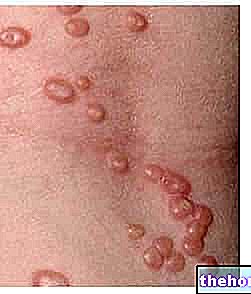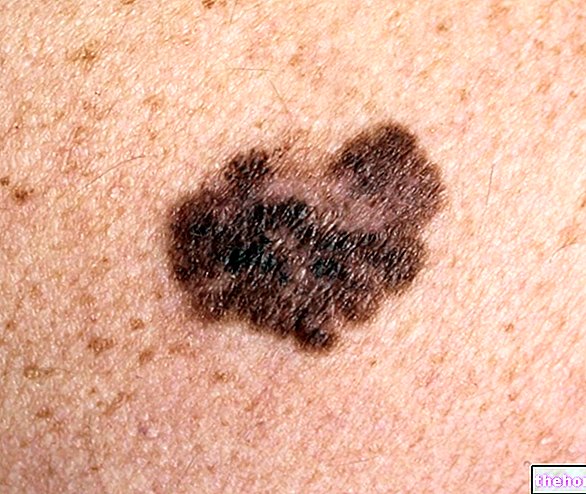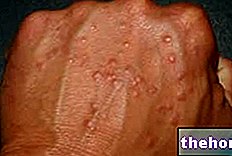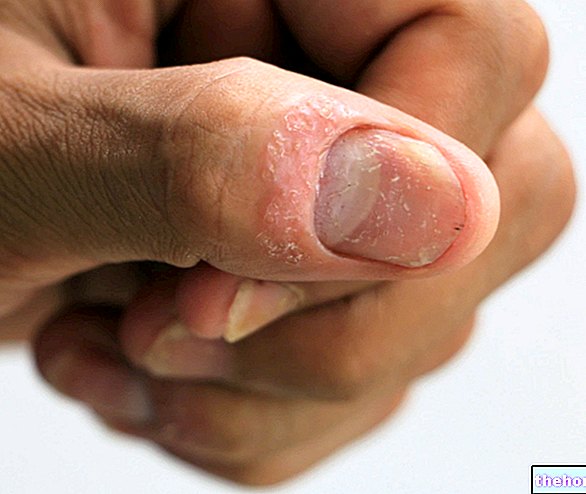Jaundice and yellow skin
The yellow color of the skin is the typical expression of jaundice, which in turn indicates a malfunction in the liver. The yellowish hue, in this case also extended to the ocular sclerae (the white of the eye), is the typical consequence of a accumulation of bilirubin, a substance resulting from the breakdown of aged red blood cells; the

Among the most common causes of jaundice, therefore of yellow skin, we remember the hereditary disease of Gilbert. Generally, this disease occurs completely asymptomatic and yellow skin can appear more or less evident due to aggravating factors, such as severe stress, infections, prolonged fasting, taking certain drugs (such as paracetamol) and intense physical exertion. .
Yellow skin of jaundice origin can be the consequence of other liver diseases, more serious than the previous one - such as cirrhosis, liver tumors, hepatitis, alcoholic liver disease, biliary atresia, fatty liver - or extrahepatic, such as pancreatitis, pancreatic tumors, biliary obstruction , sickle cell anemia (sickle cell disease), thalassemia, infectious mononucleosis and yellow fever (tropical disease transmitted through mosquito bites).
Symptoms of liver diseases linked to jaundice, therefore associated with the presence of yellow skin, include: loss of appetite; fatigue, malaise and significant weight loss; dark urine or light stools nausea, vomiting, diarrhea, varicose veins, low blood sugar, low-grade fever, muscle aches and loss of sex drive; pain in the liver.
Hypercarotenosis and yellow skin
When the skin is yellow tending to orange it could be hypercarotenosis (carotenoderma, carotenemia), a condition due to the accumulation of carotenoids. These yellow-orange pigments are generously preserved in numerous plant foods: carrots, broccoli, spinach, cantaloupe, mango, papaya, sweet potato, pumpkin, etc., so a high consumption of these foods or pro-vitamin A supplements can be associated with yellow skin. An excess of saffron - through food and / or supplements - can also be a cause of yellow skin.
In case of carotenosis, the yellow-orange color mainly affects the palms of the hands and the soles of the feet; the face may also be affected, but - unlike jaundice - the ocular sclerae are spared. A low body weight, even if not yet pathological, associated with the yellow-orange coloration of the palms and soles of the feet, may be one of the few physical symptoms associated with anorexia nervosa in the early stages. This symptom could in fact derive from the habit of eating almost exclusively vegetables, many of which are rich in carotenoids, which accumulate in the skin.
Hypothyroidism and yellow skin
The lack of thyroid hormones compromises the body's ability to convert beta-carotene into vitamin A; consequently, the accumulation of circulating carotenes contributes to the yellowish color of the skin. For the above, with the same beta-carotene taken through diet and supplements, hypothyroid subjects run a greater risk of developing carotemia. Typical symptoms of hypothyroidism include fatigue, coldness, bradycardia, musculoskeletal pain and weight gain.




























